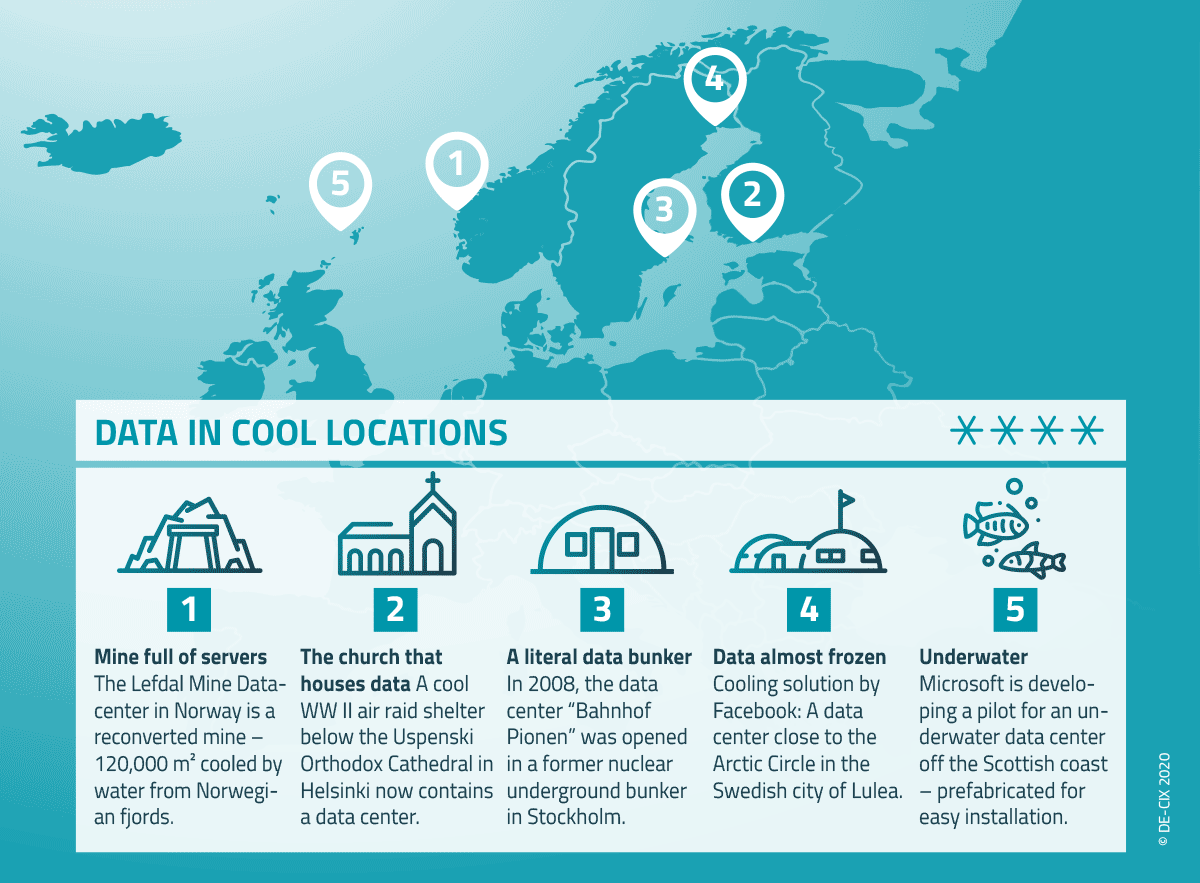Your data might be in the Arctic
Five data centers in unexpected places
The world watches over 700,000 hours of Netflix and sends close to 200 million emails in just one minute. We live in a society ruled by information and data and nowadays, almost all our actions generate some kind of data which then has to be stored somewhere.
In addition to the increase in the number of people with access to the Internet, developments such as the arrival of 5G and the Internet of Things will increase data volumes. This growth poses a challenge for data center operators in terms of storage and space. Data center designers are therefore engaged in an ongoing process of increasing energy efficiency. Not only is data center and IT infrastructure being designed to consume less power, but also the location of a data center can be exploited for this.
As a result, we can find data centers cropping up in places around the world we never would have imagined. We have gathered a selection of five data centers located in the most unusual places on our planet!

1. Mines full of servers
Data center cooling is a major challenge. Servers need to be operational 24 hours a day without interruption, which generates a lot of heat, but high temperatures are detrimental to their proper functioning. However, an effective solution to this challenge has been found in Norway: installing a data center inside an old mine. The Lefdal Mine Datacenter is the most innovative example of a reconverted mine. Its 120,000 square meters are cooled by water from the Norwegian fjords and all the energy it uses comes from renewable sources. There are also initiatives to imitate this project in the mines of Asturias in Spain.
2. The church that houses data
In Helsinki, Finland, the Uspenski Orthodox Cathedral already had something curious below its foundations: a World War II air raid shelter. This shelter has now become a data center. Down there, the temperature is already cool enough for the servers, and the heat they emit is absorbed and distributed to the heating system in the area, which provides enough energy for 500 homes. It seems that this church is not the only one with this feature: the Salem Chapel in Leeds, UK, was closed in 2001 and also converted into a data center.
3. A literal data bunker
As seen above, military shelters can be a good option for housing this type of building. In 2008, a data center was opened in Sweden in a former nuclear bunker from the Cold War era. The Bahnhof Pionen is located 30 metres underground and is guarded by a 40cm thick steel door. To make it more pleasant for the staff that work underground all day, the center has vertical gardens, waterfalls, and a 2,600-liter fish tank. In France, the company Interxion is going to convert a former World War II submarine base and its bunker located in Marseille into one of its data centers, taking advantage of the structure and security with which it was built.
4. Data almost frozen
Facebook is one of the largest technology companies on the planet and as such has to manage huge amounts of data. Mark Zuckerberg's company was aware that they had to address the issue of cooling, and set up a data center in the Swedish city of Lulea, close to the Arctic Circle. The system takes advantage of the low temperatures of the outside air to cool the interior and thus relies less on additional generators.
5. A data center below sea level
More than half the world's population lives within 200 kilometers of the coast. That's why Microsoft is developing a pilot project for an underwater data center off the coast of Scotland. These centers are the size of a shipping container, about 12 meters long, and are prefabricated and thus easy to install. Although this is a test project, it is another example of the innovative solutions being implemented to ensure better network quality.
Without data centers, the Internet would not be what it is today
This selection of unusal data center locations shows how much is going on in the data center industry. Without our data centers partners wherever they are around the world, the Internet would not be what it is today; and DE-CIX would not have been able to create immense interconnection ecosystems around the world.
More stories
